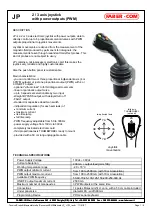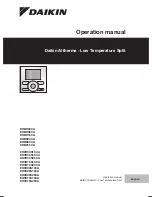
Zone Polling & Voting and Alarm Detection & Reporting
Zoning
Description
The Orion system can be configured to operate as a true zoning system
with the addition of a MiniLink Polling Device. The MiniLink Poll-
ing Device acts as a loop manager receiving information from the
Non-Modular VAV/Zone Controller Actuator Packages, interpreting
this information, and then sending a heat, cool, or vent signal to the
VCM-X Controller.
Zone Polling
The MiniLink Polling Device must be configured for zoning operation
from the Modular System Manager, System Manager TS, Modular
Service Tool, or Prism computer software. During the setup and program-
ming, the user is required to enter the last VAV/Zone address on the loop.
Once configured, the MiniLink Polling Device begins polling each VAV/
Zone Controller for its temperature and setpoint information. A zone poll
cycles through all configured zones in one pass without interruption.
The following is a list of status information required by the MiniLink
Polling Device to correctly perform its HVAC Mode calculations.
•
Zone Temperature
•
Current Cooling Setpoint
•
Current Heating Setpoint
•
Current Zone Operating Mode Status & Alarm Conditions
A zone is considered
MISSING
if it fails to respond to 5 consecutive
polling requests. A Missing Zone alarm can be generated in less than
2 minutes. This alarm can generate an alarm call out to maintenance
or a supervisor if the system has been properly setup. See the “Alarm
Detection And Reporting section for more information.
Zone Voting
If a zone has been configured for the
VOTING
mode, the MiniLink Poll-
ing Device will perform the following tests based on the data received
during the zone polling operation. These tests insure that only properly
operating zones can have an effect on the HVAC Mode calculation.
•
The zone has not been reported as MISSING
•
The zone is not currently undergoing Damper Calibration
•
The zone damper has not failed driving Open or Closed
and has passed Calibration
•
The zone temperature readings are between 40 °F and
105 ºF
•
The Zone Cooling Setpoint is between 55 °F and 105 ºF
•
The Zone Heating Setpoint is between 48 °F and 99 °F
•
The zone has not been declared Maverick by the MiniLink
Polling Device
•
The zone has been configured as a VOTING zone
If
all
the above tests are passed, the zone temperature and setpoints
are then included in the HVAC Mode decision; otherwise, this zone
is ignored.
Testing for Maverick Zones
During the HVAC Mode decision process, a zone cannot be included
in the Voting if it has been declared as Maverick. A zone is determined
to be a Maverick if it stays 4 ºF below the Space Heating setpoint for 1
hour or 4 ºF above the Space Cooling setpoint for 1 hour. During this 1
hour time period, the zone is still included in the voting, but it generates
a
PRIORITY
call for heating or cooling to the MiniLink PD. During this
1 hour time period, if the Space Temperature moves to within 2 ºF of its
Space Heating or Space Cooling Setpoint, the
PRIORITY
is canceled.
If the zone stays in
PRIORITY
for greater than 1 hour, it then becomes
a Maverick zone. At that point, its
PRIORITY
is canceled and the zone
is ignored in the voting process until the Space Temperature changes to
within 2 ºF of its Space Heating or Space Cooling Setpoint. If at least
75% of the zones go Maverick simultaneously, the MiniLink Polling
Device assumes an abnormal condition has occurred in the building and
resets all the zones back to normal. It then restarts the 1 hour Maverick
test over again for all zones. Maverick testing can be disabled if your
system is connected to a personal computer with the Prism Computer
Software installed.
Alarm Detection and Reporting
The VAV/Zone Controller continuously performs self diagnostics during
normal operations to determine if any operating failures have occurred.
These failures can be reported to the user in several ways, depending on
the type of system and options installed by the user. If a System Manager,
System Manager TS, or a Modular Service Tool is connected, the alarms
will be reported on the Status Screens. If the Prism computer front end
software is installed, the alarms will be reported on the main screen of
the program and be logged to disk. If the remote communications option
is installed, all alarms except the Damper Feedback Failure condition
can initiate a call out to a pager to alert someone to the alarm condition.
See the
Prism Technical Guide
for further information on this topic.
26
Non-Modular ZCAP Technical
Guide
Sequence of Operations











































